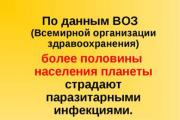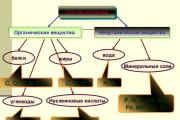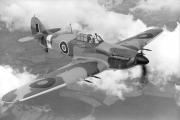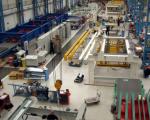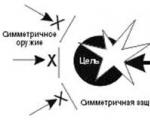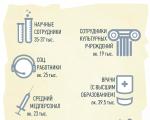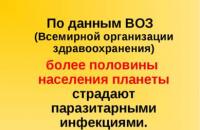The respiratory system of birds is special. This is due to the fact that flight requires more energy than is required to walk on land, and even more so to swim in water. In order for the body to produce more energy, it requires more oxygen. Consequently, the respiratory system of birds in the process of evolution should have become very efficient, which is what happened. Birds are characterized by the so-called double breathing when oxygen enters the lungs both during inhalation and exhalation. This type of breathing is also called continuous breathing. This is possible due to the fact that birds not only have lungs, but also lung sacs. The lung sacs are also called air sacs.
When a bird inhales, air fills both the lungs and the posterior pulmonary sacs. Gas exchange (that is, the penetration of oxygen into the blood and the release of carbon dioxide from it) occurs only in the lungs. Therefore, during inspiration, the air in the posterior pulmonary sacs remains fresh (oxygen-rich). When you exhale, used air from the lungs exits into the anterior air sacs, and fresh air from the posterior pulmonary sacs enters the lungs. From the anterior air sacs it exits through the central bronchi and trachea to the outside during exhalation.
As is known, the respiratory system of animals (including birds) consists not only of the lungs, but also of other organs that mainly play auxiliary function. In birds this is the larynx, trachea, bronchi. In addition, birds have a lower larynx with a vocal apparatus in the lower part of the trachea. First comes the upper larynx, then the trachea, then the lower larynx, one central bronchus departs from it, which branches into two (right and left). The bronchi enter the lungs and branch there into small secondary and tertiary ones.
The lungs of birds themselves have a spongy structure. Moreover, this “sponge” is quite dense, consisting mainly of small branches of the bronchi. The walls of the secondary and tertiary bronchi contain a dense capillary network.
The lung sacs of birds can be several times larger in volume than the lungs. This is important not only for the breathing process, but also for reducing body density, as well as for cooling it during flight. Energy is also released in the form of heat. If the birds did not effectively cool their bodies, they would overheat.
In the respiratory system of birds, there are usually four pairs of air sacs and one unpaired one. They have thin walls and stretch easily. The bags are formed as outgrowths of the bronchi. Air sacs lie among internal organs, between muscles, and even enter the cavities of tubular bones.
The mechanism of air intake and ejection differs between birds in flight and at rest (when they are not flying). At rest, birds expand and contract their chest. During flight, the air sacs expand and contract due to the movements of the wing muscles and abdominal muscles. The chest of birds remains almost motionless in flight and provides support for the wings. When the wings rise, the air sacs stretch; when they fall, the sacs compress. Thus, the stronger and more often the bird flaps its wings, the more intense the breathing process is. The number of inhalations and exhalations per minute in flight in birds can be tens of times greater compared to the resting state.
Respiratory system of birds differs sharply from the respiratory systems of other terrestrial vertebrates in a number of features that intensify respiration and thereby ensure high level oxygen consumption.
Through the paired nostrils, air is sucked into the nasal cavity and passes through the choanae into the oral cavity. The larynx, supported by three laryngeal cartilages, opens here through a narrow slit. Unlike mammals, the upper larynx of birds does not have vocal folds and does not serve as a source of sounds. Behind the larynx is the trachea - a flexible tube, the lumen of which is supported by cartilaginous tracheal rings located in its walls. In the body cavity, the trachea splits into two bronchi, each of which enters the corresponding lung and branches there. The lower part of the trachea and the initial sections of the bronchi form the lower larynx, a vocal apparatus characteristic only of birds, the structural details of which vary greatly. The source of sounds is the membranes that vibrate as air passes, located between the last rings of the trachea and the semi-rings of the bronchi. Special muscles change the tension of the vocal membranes, changing the nature of the sounds produced. Often the lower rings of the trachea grow, forming a thin-walled bone drum, amplifying sounds and changing their modulation. In other species, the resonator can be an elongated trachea, forming loops lying under the skin in the area of the crop or even protruding into the carina of the sternum (cranes, etc.).
The paired lungs are relatively small in size, quite dense and have little extensibility; they grow onto the ribs on the sides of the spinal column. Having entered the lung, the bronchus breaks up into 15-20 secondary bronchi, most of which end blindly, and some communicate with the air sacs. The secondary bronchi communicate with each other by numerous smaller parabronchi, from which arise many bronchioles - radially located cellular outgrowths, densely intertwined with pulmonary blood capillaries. This is where the blood is oxygenated. The total respiratory surface of the lungs of birds significantly exceeds the respiratory surface of the lungs of reptiles and is quite comparable to the respiratory surface of the lungs of mammals. Associated with the lungs of birds are air sacs - transparent, elastic, thin-walled outgrowths of the mucous membrane of the secondary bronchi. The volume of the air sacs is approximately 10 times the volume of the lungs.
Bird air sacs
One of the air sacs - interclavicular - unpaired, four paired - cervical, anterior and metathoracic, abdominal. Air sacs are located between the internal organs, and their processes penetrate under the skin and into the cavities of large bones (shoulder, hip, etc.). The act of breathing is carried out due to the expansion and contraction of the chest. When you inhale, when the sternum moves away from the spinal column, the volume of the body cavity increases and the elastic air sacs expand, sucking in air. In this case, air from the lungs is sucked into the front air sacs, and air from external environment along the trachea, bronchi and their branches goes to the lungs and to the rear air sacs of the metathoracic and abdominal.
When exhaling, the sternum moves towards the spinal column, the volume of the body cavity decreases and; under pressure from internal organs, air is squeezed out of the air sacs. Air containing a lot of oxygen from the posterior air sacs is pumped into the lungs, and air from the anterior sacs - interclavicular, cervical and prothoracic, containing little oxygen but a lot of carbon dioxide, is pushed into the trachea and expelled out. Thus, oxygen-saturated air passes through the lungs almost continuously, both during inhalation and exhalation, enriching the blood with oxygen (the so-called double breathing). More complete; Blood saturation with oxygen is also facilitated by the movement of blood in the lungs towards the flow of air (the counterflow principle). With intense movement, especially in flight, the frequency of respiratory movements increases. Thus, a mallard duck takes 10-16 breaths per minute at rest, and 90-120 during takeoff. In small birds, breathing is rapid - up to 60-100 breaths per minute at rest.
In addition to intensifying breathing, air bags prevent the body from overheating during intense movement, since excess heat is removed by constantly changing air. An increase in intra-abdominal pressure during exhalation promotes defecation. Diving birds, by increasing the pressure in the air sacs, can reduce the volume and thereby increase the density, which makes it easier to dive into water.
Literature: Zoology of vertebrates. Part 2. Reptiles, birds, mammals. Naumov N.P., Kartashev N.N., Moscow, 1979
The respiratory apparatus of birds consists of: nasal cavity, upper larynx, trachea, lower larynx, bronchi, lungs, air sacs.
Respiration is the process of exchange of gases between the body and environment, release of respiratory moisture and with it heat, oxidation of nutrients and release of energy for the needs of the body. An animal organism needs a constant supply of oxygen and the release of carbon dioxide.
The breathing process includes external (pulmonary) respiration (exchange of gases between the body and the external environment in the lungs), internal (tissue) respiration (processes of gas exchange in cells) and the transport of oxygen from the lungs to the tissues by the blood, and carbon dioxide in the opposite direction.
The respiratory organs of birds ensure the exchange of gases between the body and the environment, and participate in the regulation of water, heat exchange and acid-base balance.
The nasal cavity is short, divided by a bony and partially cartilaginous septum, located in the upper part of the beak. At the base of the beak there are nostrils of small diameter. In each half of the nasal cavity there are three nasal conchas in the form of curls of cartilage.
The nasal cavity is an organ where air is filtered and freed from mechanical impurities. A large number of blood capillaries in the cavity contribute to heating the air. The nasal cavity is connected through the choanae to the oropharyngeal cavity, so air from it can enter the trachea.
Respiratory system of a bird. Photo: wikimedia.
The upper larynx is located behind the posterior edge of the tongue, between the lingual bone and the choanae, in the form of an oval or round pillow, divided by a longitudinal fissure - the entrance of the larynx.
The larynx is bounded laterally by the annular and two arytenoid cartilages. In front of the entrance to it there is an epiglottis in the form of a small transverse fold with papillae, which protects against food masses entering the larynx.
The annular cartilage, which is the basis of the larynx, consists of an upper, lower and two lateral parts. The lower part consists of an ossified plate, the rest are made of hyaline cartilage. Birds do not have vocal cords in the upper larynx.
The lower (singing) larynx is located at the end of the trachea, at the site of its bifurcation. It is formed by the last three rings of the trachea, which are connected in chickens or completely ossify in geese and drakes. The result is a drum for sound resonance. The left bronchus also participates in the formation of the drum. The cartilaginous septum of the singing larynx, consisting of the last ring of the trachea, protrudes into the lower part of the drum cavity. There are glottis. The muscles of the lower larynx can quickly contract or relax and thereby tighten or weaken the membranes; the air flowing from the lungs causes them to vibrate. In chickens, in the lower larynx there are two connective tissue folds that vibrate as air passes, producing sound. In songbirds, these muscles are more differentiated than in other species (there can be up to seven pairs of them).
The trachea is a hollow, relatively long tube consisting of cartilaginous or ossified rings, which are connected to each other by short interring connective tissue ligaments. The diameter of the trachea is the same along its entire length; sometimes the trachea is somewhat narrowed at the lower end and widened in one or two places in the middle. The trachea forms curves, so its length exceeds the length of the neck. Having entered the chest cavity, the trachea divides into two bronchi. The trachea is driven by two muscles - the clavicular tracheal and sternotracheal muscles, which accompany it.
Bronchi. In the chest cavity, behind the sternum, the trachea is divided into two main bronchi, 6-7 mm long and 5-6 mm in diameter. One of them enters the right and the other enters the left lung. Having entered the lungs, both trunks of the main bronchi expand in an ampulla-like manner at the beginning of the second third of the ventral surface, lose their cartilaginous rings and continue to the end of the lungs in the form of membranous canals, then flow into the corresponding abdominal air sacs with a caudal opening. The section of the main bronchus, surrounded by cartilaginous rings, passing through the entire lung, is called the mesobronchi, and the place of its ampulla-shaped expansion is the vestibular part.
Bronchioles and funnels form a system of air tubes and air funnels extending from them in the shape of a hexagonal prism. The entire system of airways is a dense network of horizontal and vertical (large and small sizes) air tubes, similar in design to an arachnoid network. The walls of the bronchioles consist of delicate connective tissue, penetrated by a network of tiny blood vessels (capillaries). The latter wrap around the airways and are woven into the network of bronchioles, creating close contact between the blood vessels and the airways, ensuring gas exchange in the lungs.
The lungs of birds are light red in color, spongy in structure, shaped like elongated sachets, and low in elasticity. The lungs perform one of the main functions in general gas exchange. They receive atmospheric oxygen, which passes into the blood through the epithelial cells of the smallest respiratory tubes and the endothelium of the capillaries. With exhaled air, it is released through the lungs carbon dioxide and moisture.
The lungs are located in the chest cavity on the sides of the spinal column, occupying the space from the first rib to the cranial edge of the kidney. The lungs do not lie freely. With their upper (dorsal) surface they are pressed between the ribs and are firmly connected to them. The grooves formed by the ribs are clearly visible on the surface of the lungs. The lower surface of the lungs is smooth and covered with pleura.
Air sacs are thin-walled structures that are filled with air. They are an extension of the bronchi and continue them. The walls of the sacs contain a dense network of blood vessels. The air sacs connect at one end to the bronchi, and some of them give off processes (diverticula) to the bones that have air cavities. There are nine main bags in the bird’s body, including four paired ones, located symmetrically on both sides, and one unpaired one.
Paired bags include: cervical, thoracic anterior and posterior, abdominal, or abdominal. The unpaired air sac is the clavicular sac. The air sacs are divided into inspiratory (abdominal and posterior thoracic) and expiratory (anterior thoracic, cervical and clavicular).
Inhalation air sacs. The main bronchus at the posterior edge of the lung branches and, expanding, forms inhalational air sacs - abdominal and posterior thoracic.
The abdominal sacs are the largest of all the air sacs available. They are located on the sides of the abdominal cavity and form diverticula to the pelvic and sacral bones.
The posterior thoracic (diaphragmatic) sacs are located in the area of the diaphragm, between the thoracic and abdominal cavities, cranial to the air-bearing abdominal sacs and ventral to the abdominal organs.
Exhalatory air sacs. The anterior thoracic sacs are located cranial to the metathoracic air sacs, are supplied with air from the anterior thoracic bronchi, and do not have processes to the bones.
The cervical sacs are located in the lower part of the neck, extended towards the skull parallel to the cervical vertebrae. They communicate with the cervical and thoracic vertebrae, as well as with the vertebral part of the ribs.
The clavicular air sac is located caudal to the clavicle. It is filled with air from the clavicular bronchus, which departs from the main bronchus at the very beginning of the lung. The clavicular sac has lateral diverticula - axillary sacs that go to the humerus and chest bones, to the ribs and bones of the shoulder girdle.
1 option
1. The body shape of birds has the shape:
a) streamlined;
b) flat,
c) spherical.
2. The beak of birds consists of:
a) horny jaws; b) ridge scales; c) bone jaws.
3. The contour feather of birds consists of:
a) core, edge; b) rod, fan, beard; c) rod, fan, edge, beard.
4. What forms the chest of birds:
a) thoracic vertebrae; b) thoracic vertebrae, ribs, sternum; c) thoracic vertebrae, keel, ribs.
5. What bone forms the tail section of a bird:
a) pelvic; b) coccygeal; c) crow.
6. The belt of the forelimbs of a bird consists of:
a) two elongated shoulder blades, two fused pelvic bones; two crow bones;
b) two coccygeal bones, two elongated shoulder blades; two crow bones;
c) two crow bones, two elongated shoulder blades, two clavicles fused at the bottom.
7. The most developed fingers of a bird:
a) 2 front; b) average; c) rear.
8. The skeleton of the hind limbs consists of:
a) femur, 2 fused tibia bones, tarsus, finger bones;
b) femur, tarsus, finger bones, crow bone;
c) femur, tarsus, finger bones.
9. Goiter is:
a) dilation of the esophagus; b) expansion of the pharynx; c) dilatation of the intestine.
10. When the sternum lowers in birds, air passes from the lungs:
a) into the lungs and posterior air sacs; b) into the anterior air sacs; c) into the lungs.
11. The lungs of birds receive:
a) arterial blood; b) mixed blood; c) venous blood.
12. In birds only:
a) right ovary; b) both; c) left ovary.
13. Birds have:
a) coccygeal gland; b) sacral; c) mammary gland.
14. Heart of birds;
a) 4-chamber; b) 2; c) 3.
15. The lungs of birds look like:
a) bags; b) meshes; c) spongy bodies.
16. Bird excretory organs:
a) kidneys; b) kidneys and ureters; c) cloaca.
17. Bird testes have:
a) bean-shaped; b) pea-shaped; c) curved.
18. What is the reason for the higher level of metabolism in birds (compared to reptiles):
a) with perfect breathing, rapid digestion of food;
b) with perfect breathing, rapid digestion of food, perfect blood circulation, improvement of the digestive system;
c) with perfect breathing, blood circulation, and rapid digestion of food.
19. What is the development of the midbrain associated with:
a) with coordination of complex movements; b) with perfection of the visual organs.
20. What is the significance of poultry protein:
a) Protection from mechanical damage;
b) Protection from mechanical damage and water source;
c) Source of water.
PART B.
1. Birds are warm-blooded animals.
2. Bird skin has large number iron
3. The coccygeal gland secretes fat necessary to lubricate the feather cover.
4. Birds have keen eyesight.
5. Birds have a three-chambered heart.
6. Birds have sharp teeth.
7. According to the method of movement, birds are divided into three groups: running, swimming and flying.
8. All gallinaceous birds are ratites.
9. Perhaps the first birds appeared on Earth about 1 million years ago.
10. The jaw of birds is represented by a beak.
Explain the meaning of the expression “Water is off a duck’s back.”
Test "Bird Class"
Option 2
1. The bony jaws of the bird are covered with:
a) horny sheath; b) bone sheath; c) keratinized sheath.
2. Outside the bird’s body is located:
a) flight feathers; b) tail feathers; c) contour feathers.
3. Large contour tail feathers are:
a) tail feathers; b) flight feathers; c) feather feathers.
4. What fluid accumulates in the coccygeal gland:
a) watery; b) oily; c) coccygeal.
5. What forms the rump of a bird:
a) the last thoracic vertebra, all lumbar, sacral and anterior caudal vertebrae;
b) all lumbar, sacral, anterior caudal, femoral,
c) the last thoracic vertebra, sacral and anterior caudal.
6. What is the girdle of the hind limbs formed by:
a) 2 pairs of pelvic bones; b) 3 pairs of pelvic bones; c) pelvic and sacrum bones.
7. The skeleton of the hind limbs consists of:
a) femur, 3 fused bones of the lower leg, tarsus, finger bones;
b) femur, 2 fused shin bones, finger bones,
c) femur, 2 fused bones of the lower leg, tarsus, bones of the foot and fingers.
8. In the glandular section of the stomach there are:
a) glandular juices; b) digestive juices; c) enzymes.
9. The importance of bird air sacs:
a) participation in breathing; b) decrease in body density, breathing,
c) protection of internal organs from overheating during flight, reduction of body density, participation in breathing.
10. When the sternum is raised, air containing carbon dioxide passes:
a) into the trachea; b) into the artery; c) into the lungs.
11. The following open into the small intestine:
a) ducts of the pancreas, bile ducts of the liver and gallbladder;
b) ducts of the pancreas, bile ducts of the liver and gallbladder, duodenum;
c) ducts of the liver and gall bladder.
12. The high level of metabolism of birds is associated with:
a) with better breathing, blood circulation, faster digestion of food;
b) with more perfect breathing, faster digestion of food;
c) with more perfect breathing, with a more developed digestive system.
13. Reproductive organs of birds:
a) testes; b) testes and ovaries; c) ovaries.
14. Why is the germinal disc facing upward:
a) because the upper part of the yolk is heavier; b) the lower part of the yolk is heavier,
c) the yolk is in the center.
15. The cords consist of:
a) protein; b) water; c) nutrients.
16. The development of the cerebellum in birds is associated with:
a) perfection of the visual organs; b) coordination of complex movements of the bird.
17. Bird excretory organs:
a) kidneys; b) kidneys and ureters; c) ureters.
18. When the sternum is lowered, air from the external environment enters:
a) posterior air sacs; b) posterior air sacs and lungs; c) lungs.
19. Birds’ body organs receive:
a) venous blood; b) arterial, c) mixed.
20. What ensures a constant temperature for birds:
a) high level of metabolism; b) feather cover,
c) high level of metabolism and feather cover.
PART B.
1. Write down the numbers of the correct statements.
The strength of the bird skeleton is achieved due to the fusion of many bones on early stages individual development. In birds, the thoracic vertebrae bear ribs that are movably connected to the sternum. In many birds, the sternum does not have a keel. In birds, the hind limb girdle is formed by three paired bones: the crow's bones, the scapulae, and the clavicles. An increase in brain volume is associated with the development of the forebrain hemispheres and the expansion of motor activity and the complication of behavior. Arterial blood coming from the lungs through the pulmonary vein flows into the left atrium, and from there into the right ventricle and aorta. The lungs have a spongy structure, the bronchi entering them branch and end in the thinnest blind bronchioles. In some birds, the long esophagus forms an expansion, as the crop is where food accumulates and begins to be digested. The ureters open into the bladder, as in reptiles. The embryonic development of the chicks begins with the emergence from the egg shells.
2. Which birds correspond to the listed characteristics?
3. Write down the numbers indicating the organs that perform the functions:
Explain the meaning of the expression “The crane flies high, but never leaves the river.”
Test on the topic “Class Mammals”
Puzzle "Word Game".
Put the letters and syllables together correctly TOL + porridge
FIELD + GIFT
Mark +/- true and false statements: 1. The stomach of most animals is single-chambered
2. Food in the mouth is moistened with saliva
3. All mammals are covered with fur
4. The ancestors of mammals were wild-toothed dinosaurs
5. All mammals' babies are born already capable of movement.
6. Fertilization in females occurs inside the body
7. In mammals, the midbrain and cerebellum are well developed
8. Mammals have a four-chambered heart
9. The forebrain has convolutions
10. The forelimbs consist of the thigh, lower leg and foot
11. The thoracic spine, ribs and sternum form the rib cage
12. The length of the neck of mammals depends on the number of vertebrae
13. The skull of mammals consists of more bones than reptiles.
14. Teeth are divided into incisors, canines and molars
15. The back muscles are most developed
16. The lungs have highly branched bronchi
18. The circulatory system consists of 3 circles of blood circulation
19. External fertilization
20. All mammals make nests
21. Marsupial mammals give birth to underdeveloped young
22. The platypus is one of the oviparous representatives
23. Echidnas carry eggs in a fold of skin on their abdomen - a pouch.
Choose the correct answer: 1. Distinctive feature of mammals
1. Live birth
2. Body fur
3. Mammary glands
4. Presence of teeth
1. Mammals evolved from
1. Ancient reptiles
2. Animal-toothed lizards
3. Archeopteryx
4. Seymouria
1. The body cover of mammals is formed
1. awn and undercoat
2. Awn, undercoat, claws
3. Awn, undercoat, horny scales
4. Claws, fur
1. In the skin of mammals
1. No glands, dry skin
2. One coccygeal gland
3. Sweat and sebaceous glands
4. Sweat, sebaceous, mammary, odorous glands
1. Unlike other vertebrates, mammals have
2. Vibrissae
3. Ears
1. The belt of the forelimbs consists
1. 2 collarbones, 2 shoulder blades, 2 crow bones
2. 2 collarbones, 2 shoulder blades
3. Sternum, 2 collarbones, 2 shoulder blades, 2 crow bones
1. The length of the neck of mammals depends on
1. Lengths of vertebral bodies and their shapes
2. Number of vertebrae
3. Number of vertebrae and length of their bodies
4. Doesn't depend at all
1. Mammalian heart
1. Three-chamber with a partition
2. Three-chamber without partition
3. Four-chamber
4. Five-chamber
1. In GM the most developed
1. Midbrain and cerebellum
2. Cerebellum and medulla oblongata
3. Forebrain cortex and cerebellum.
Answer the questions: 1. Name several organs of animals that provide them with thermoregulation of the body
2. How do animals get energy for their existence?
3. What adaptations do underground mammals have to environmental conditions?
4. Name the most valuable species of wild mammals and indicate their value.
Test
on topic
Option 1
1. In most mammals in the cervical spine:
A) 6 vertebrae; B) 7 vertebrae;
B) 9 vertebrae; D) 12 vertebrae.
2. Which part of the mammalian brain is most developed:
A) medulla oblongata; B) cerebellum;
B) forebrain; D) midbrain.
3. Aperture is:
A) fold of skin; B) the outer cover of the lungs;
B) the opening between the chest and abdominal cavities; D) muscular septum;
4. The systemic circulation begins:
A) in the right atrium; B) in the left ventricle;
B) in the right ventricle; D) in the left atrium.
5. The most changing part in the mammalian skeleton different types- This:
A) skull; B) tail;
B) cervical; D) chest.
6. A fertilized egg is:
A) zygote; B) gamete;
B) sperm; D) egg.
7. When inhaling, the volume of the chest cavity is:
A) constant; B) increases.
B) decreases;
8. Which organ is not located in the abdominal cavity?
A) lungs; B) liver;
B) stomach; D) intestines.
9. The multi-chamber stomach of ruminants is adapted to digest:
A) animal food; B) plant foods.
B) mainly animal and partly plant food;
A) sweaty; B) sebaceous;
B) odorous; D) milky.
1. Select features characteristic of mammals:
A) the skin contains cutaneous glands;
B) bare skin;
B) the skin is covered with horny scales;
D) alveolar teeth;
D) are the most highly organized vertebrates;
E) the large intestine is shortened.
2. Select the features of reproduction and development of mammals:
A) internal fertilization;
B) external fertilization;
C) most lay eggs covered with a dense shell;
D) development with transformation;
D) the development of the embryo occurs in the uterus;
E) the placenta forms in the uterus.
A) the presence of a cloaca;
B) mammary glands without nipples;
C) the presence of a placenta (baby place);
D) the presence of crow bones in the shoulder girdle;
D) oviparous;
E) the cubs are born very small and poorly developed;
G) the cerebral cortex is well developed;
H) the embryonic period is very short.
Mammal group
1) Primordial
2) Marsupials
3) Placental
1. In mammals with complex behavior, the cerebral cortex has….
2. In the shoulder section of the mammalian skeleton there are no.... 3. Ribs are attached to ... vertebrae. 4. Together with ... they form the chest.
A) crow bones D) breast bones
B) facial E) sternum
C) trunk G) gyri and sulci
D) brain
Test
on topic "Class Mammals, or Animals"
Option 2
Task 1. Choose one correct answer.
1. Which bone belongs to the forelimbs:
A) shoulder blade; B) thigh;
B) shoulder; D) shin.
2. The development of the embryo (fetus) occurs:
A) in the placenta; B) in the uterus;
B) in the oviducts; D) in the umbilical cord.
3. The embryo receives nutrition for its development through the system:
A) digestion; B) breathing;
B) blood circulation; D) discharge.
4. Saliva enzymes break down:
A) proteins; B) fats;
B) carbohydrates (starch); D) all of the above substances.
A) trachea; B) bronchi;
B) larynx; D) lungs.
6. In the respiration of mammals, the main role belongs to:
A) skin; B) easy.
B) lungs and skin equally;
7. Horny skin derivatives do NOT include:
A) hair; B) hooves;
B) claws; D) sweat glands.
8. Why did mammals get this name?
A) their main food is milk;
B) their glands secrete milk;
C) they feed their young with milk from the mammary glands;
D) their stomach cannot digest milk.
9. What is the name of a group of mammals that have many features in common with reptiles:
A) Marsupials; B) Placental;
B) Viviparous; D) Primordial beasts, or Monotremes.
10. Name the glands of mammals, the secretion of which lubricates the coat, reducing its wetting:
A) sweaty; B) sebaceous;
B) odorous; D) milky.
Task 2. Choose three correct answers.
1. Select the structural features of mammals:
A) the chest cavity is separated from the abdominal diaphragm;
B) teeth are divided into groups;
C) the notochord persists throughout life;
D) the presence of one circle of blood circulation;
D) the presence of fur;
E) are cold-blooded.
2. Select the characteristics characteristic of the reproduction and development of higher (placental) animals:
A) cubs lick milk from fur;
B) the nipples of the mammary glands are well developed;
C) the development of the embryo occurs outside the mother’s body;
D) the embryo is attached to the wall of the uterus by the placenta;
D) the cubs suck milk themselves;
E) the mother squirts milk into the baby's mouth.
Task 3. Match:
Features of structure and life activity
A) molars have sharp apices, carnassial teeth are well developed;
B) spend most of their life in water;
C) the limbs are shortened and turned into flippers;
D) look like fish;
D) the hind limbs are absent, the pelvic girdle is reduced;
E) the body is covered with thick and long hair.
Order of placental mammals
2) Pinnipeds
3) Cetaceans
Task 4. What words are missing in the text? Fill in the corresponding letters in place of the gaps (the form of the words has been changed).
1. Different mammals have a different number of vertebrae... department. 2. The girdle of the forelimbs consists of paired shoulder blades and paired…. 3. Only mammals have... an ear. 4. The function of touch is performed by….
A) vibrissae D) rib
B) cervical E) external
C) caudal G) clavicle
D) middle H) lips
The respiratory system of birds is considered the most complex of all animals.
This is understandable: the flying lifestyle requires an exceptionally developed respiratory mechanism and its well-functioning operation.
Airway diagram
The respiratory tract of birds is a complex system consisting of several parts:
- Nasal and oral cavities;
- Upper and lower larynx (pharynx and syrinx);
- Trachea;
- Bronchi;
- Air bags.
The bronchi form the basis of the lungs. However, birds have only one trachea, unlike mammals. Inhalation and exhalation with such a system are carried out in a more complicated way. The lungs of birds are designed so that air passes through them.
In this case, only 25 percent of the air remains in them, the rest is collected in the air bags. When you exhale, the rest of the oxygen enters the lungs. This system is called double breathing and is distinctive feature birds.
The air sacs of a bird are the main “carrier of oxygen” and resolve the “avian paradox”, which consists in the fact that birds need to breathe much more than mammals and humans, but their lungs have significantly smaller relative sizes, are inactive and are attached to the bones of the spine and ribs.
Birds do not have a diaphragm, and air movement is created by changes in pressure in the air sacs, which are stretched and compressed by the pectoral muscles. The air bag plays the role of a pump.

structure of the respiratory system of birds photo
By expanding it, the bird forces external air into it (some of which, as already mentioned, settles in the lungs through a branch in the trachea); then she compresses it, and the air passes through another path - through the lungs, from where it exits into the trachea and out.
This breathing becomes more intense during flight; air is independently pumped into and out of the air sac during the flapping of the wings. The more intensely a bird flaps its wings, the more deeply it breathes.
In addition to the respiratory function, the air sacs perform additional functions: they lighten body weight, promote the release of excess heat, and in waterfowl they also provide buoyancy.
Efficiency
Described structure respiratory tract birds allows for more efficient gas exchange compared to the lungs of mammals, and even more so of reptiles and amphibians. Fresh air enters the lungs both during inhalation and exhalation.
At the same time, the waste air cannot immediately leave the body: there is an anterior air sac between the lungs and the trachea, and during the first exhalation, the unnecessary air remains there. During the second exhalation, the air from there finally comes out, and its place is filled by a new portion that has passed from the main, posterior air sac through the lungs.
The set of air sacs in birds is quite extensive and is not limited to the two considered. There are cranial sacs, which include the clavicular, cervical and cranial. The abundance of these cavities provides the bird with a light body capable of long flight.
However, the functions of the respiratory system of birds are not limited to breathing itself. She is also responsible for singing. The air passes through the lower larynx - the syrinx, which is also a distinctive feature of the class of birds. The trachea plays the role of a resonator and can increase in volume during singing.
These and other changes in the shape of the vocal apparatus allow birds to reproduce a huge number of sounds, including imitating human speech. Based on the size of the trachea, we can say that in small birds the entire body is responsible for resonance.



